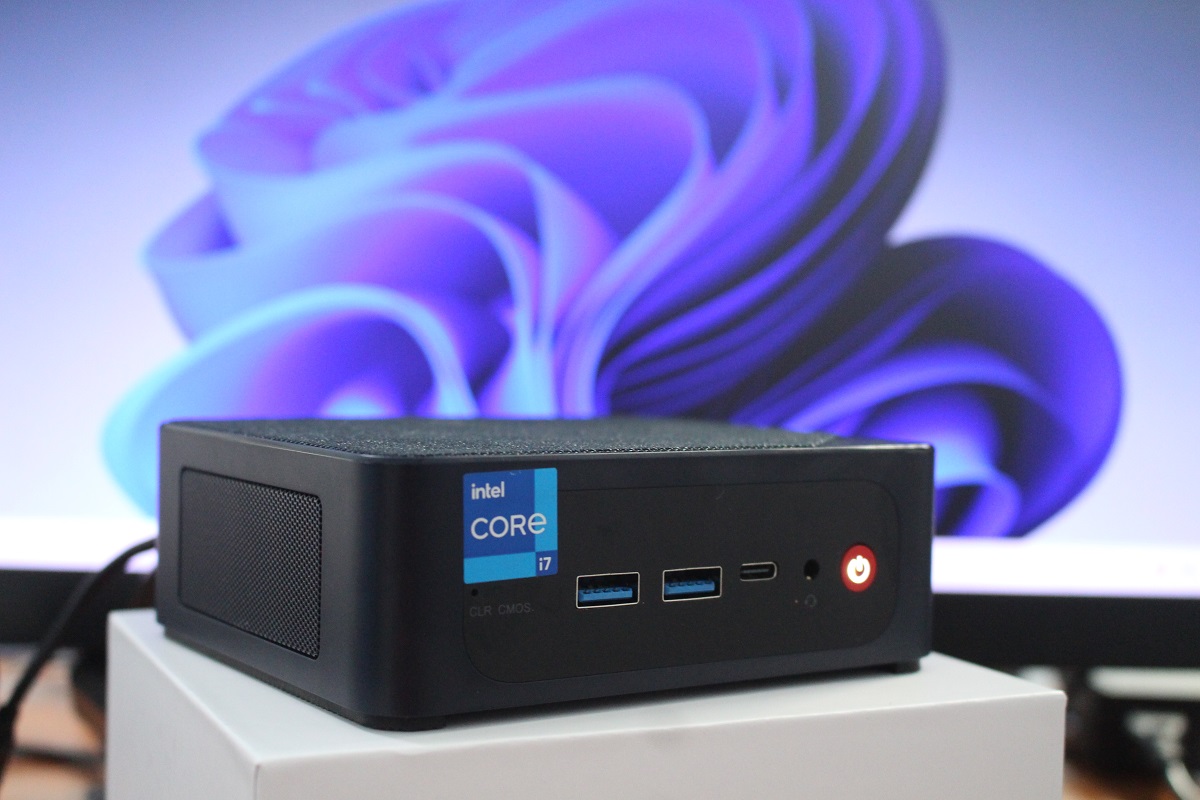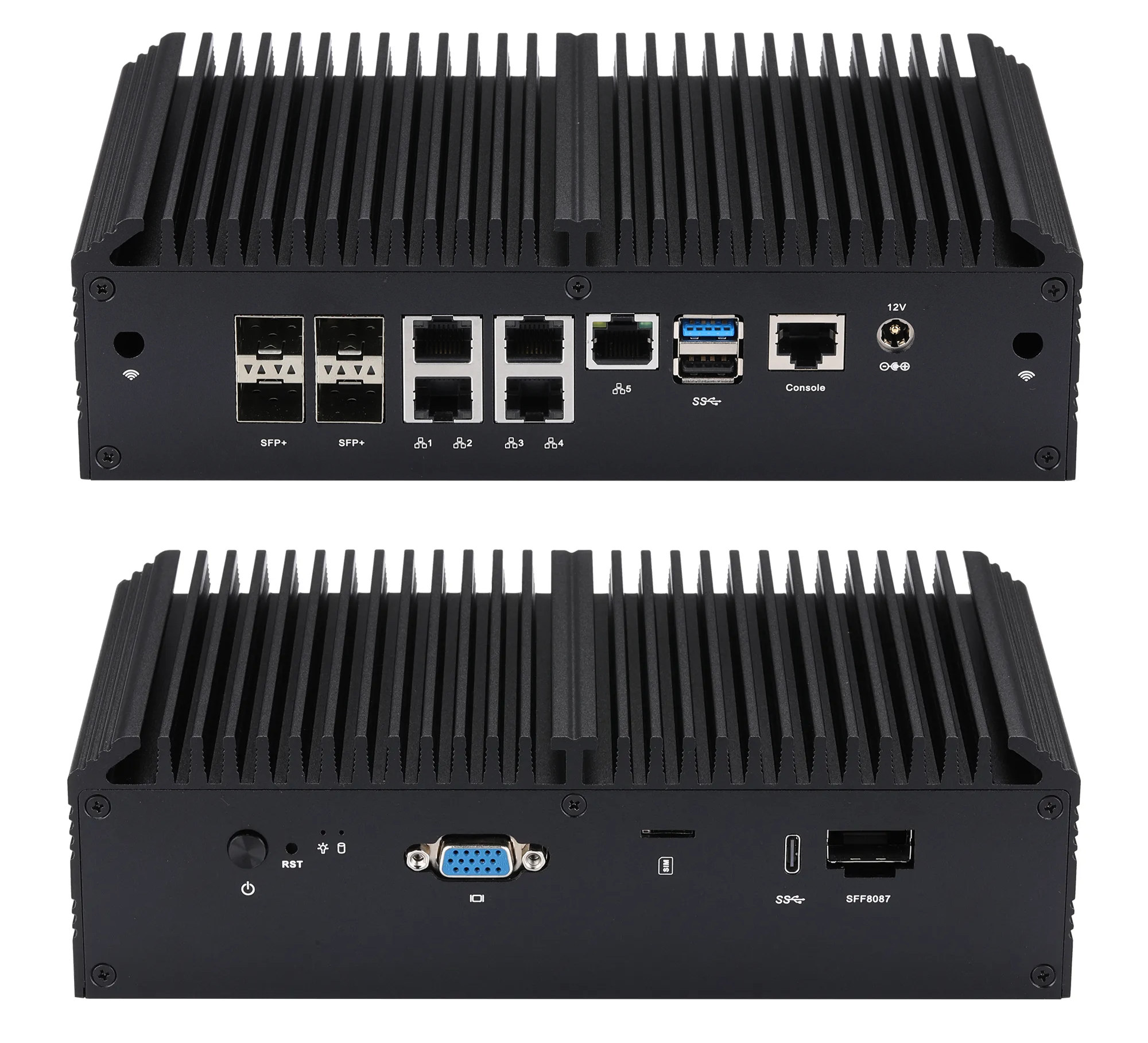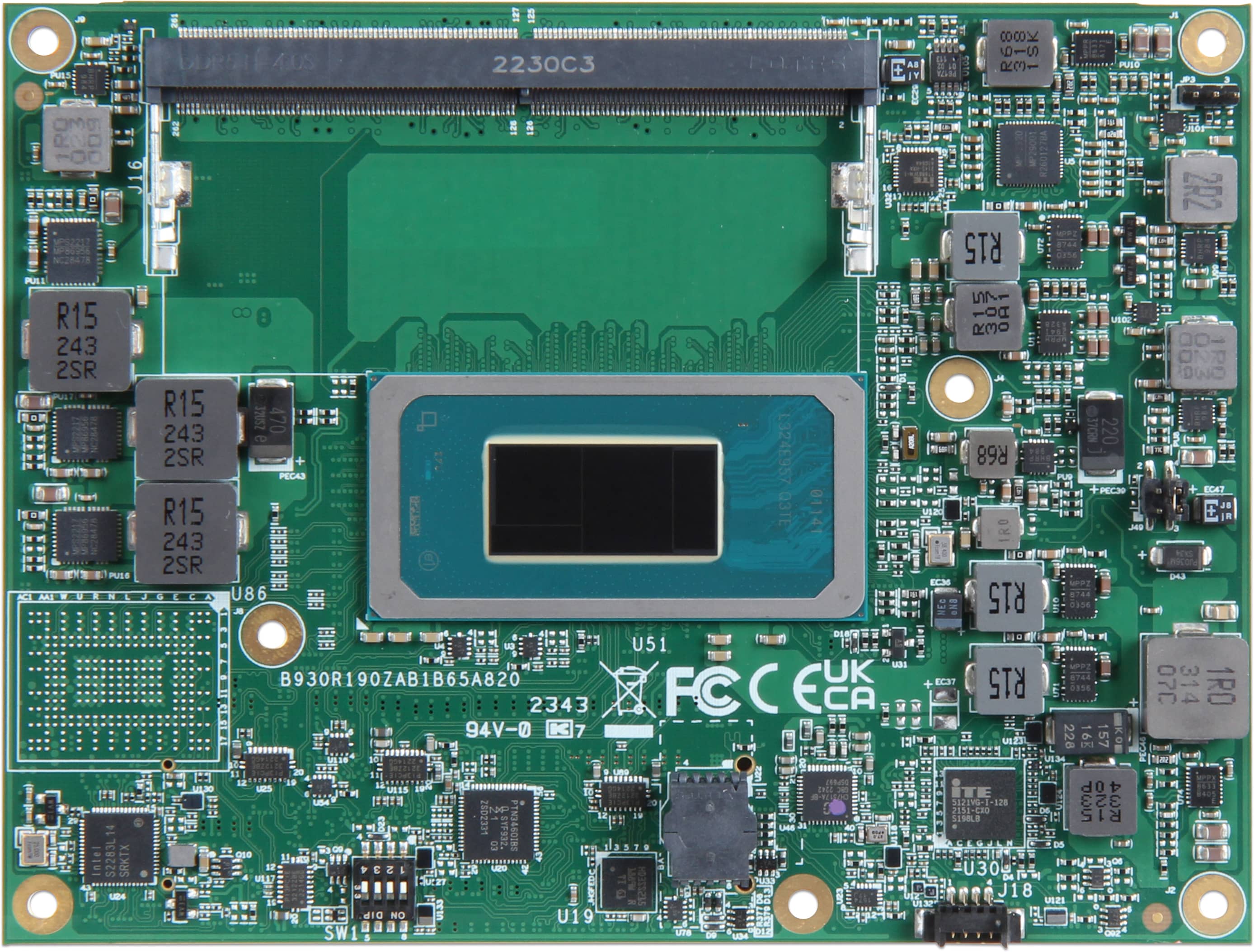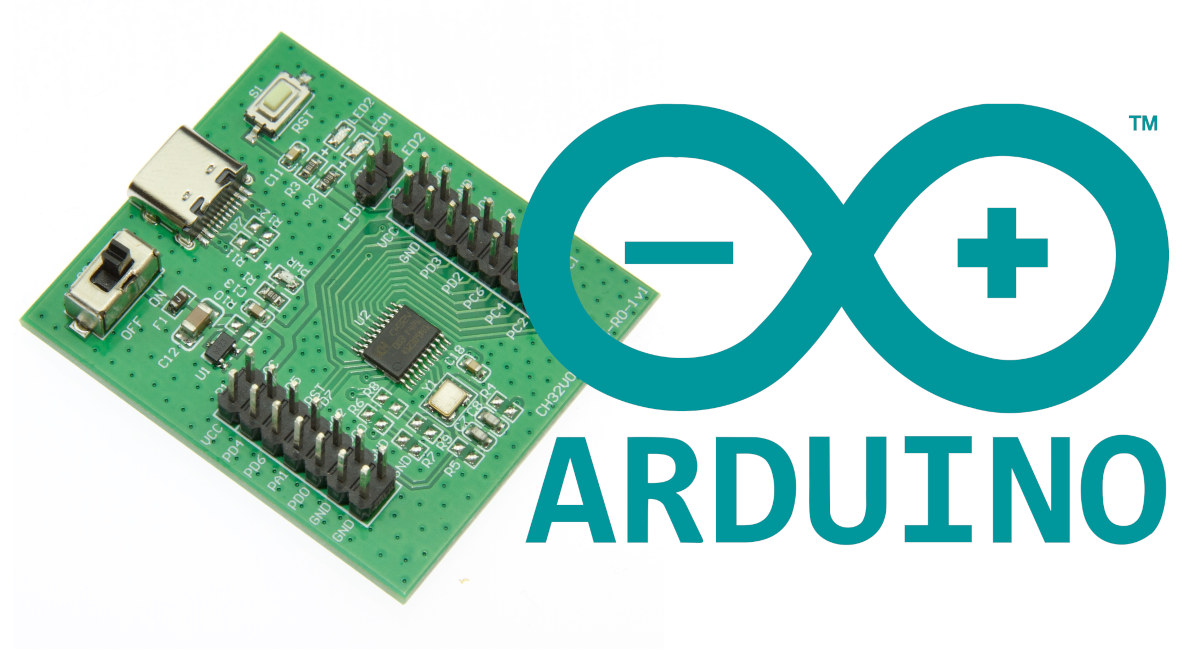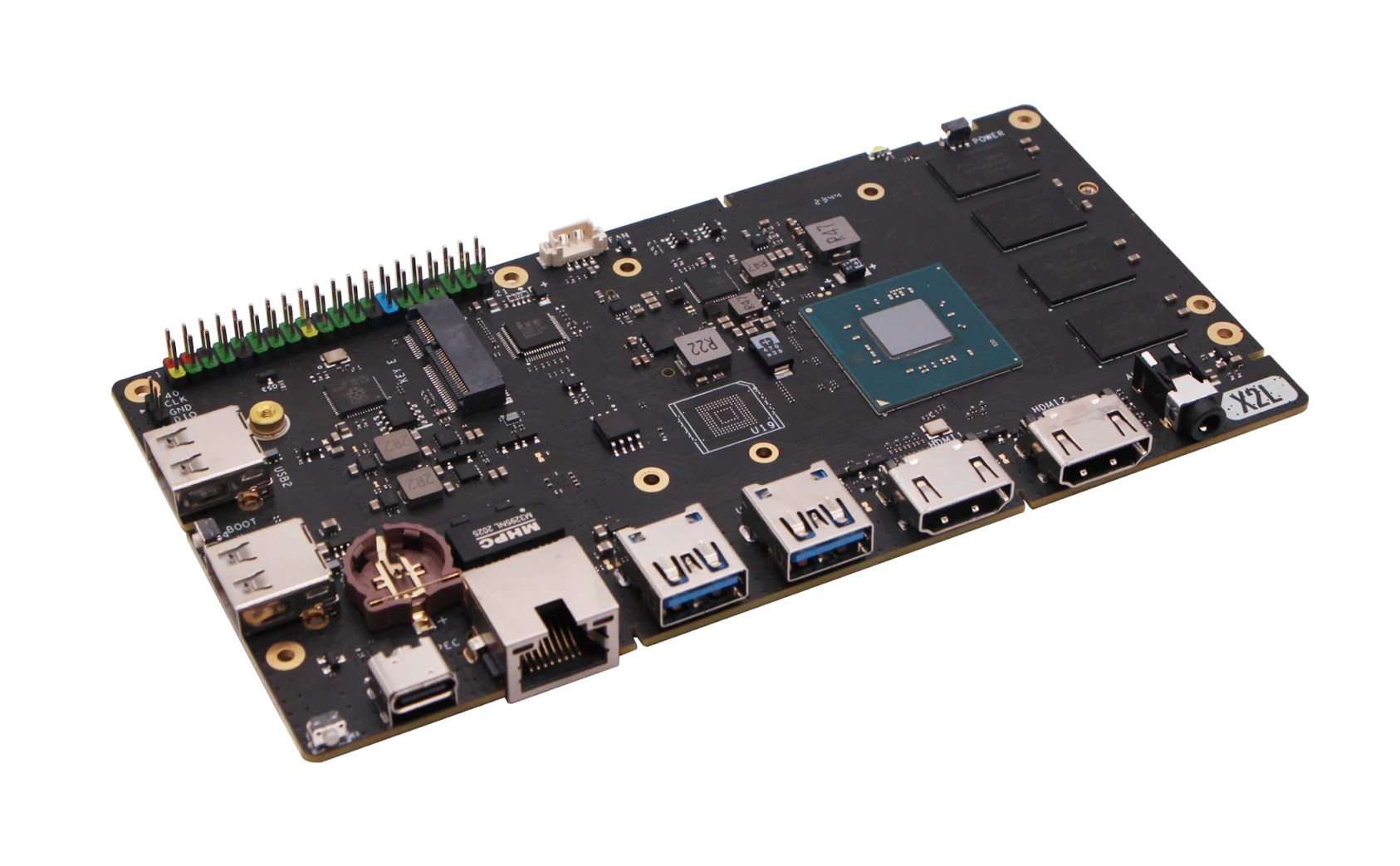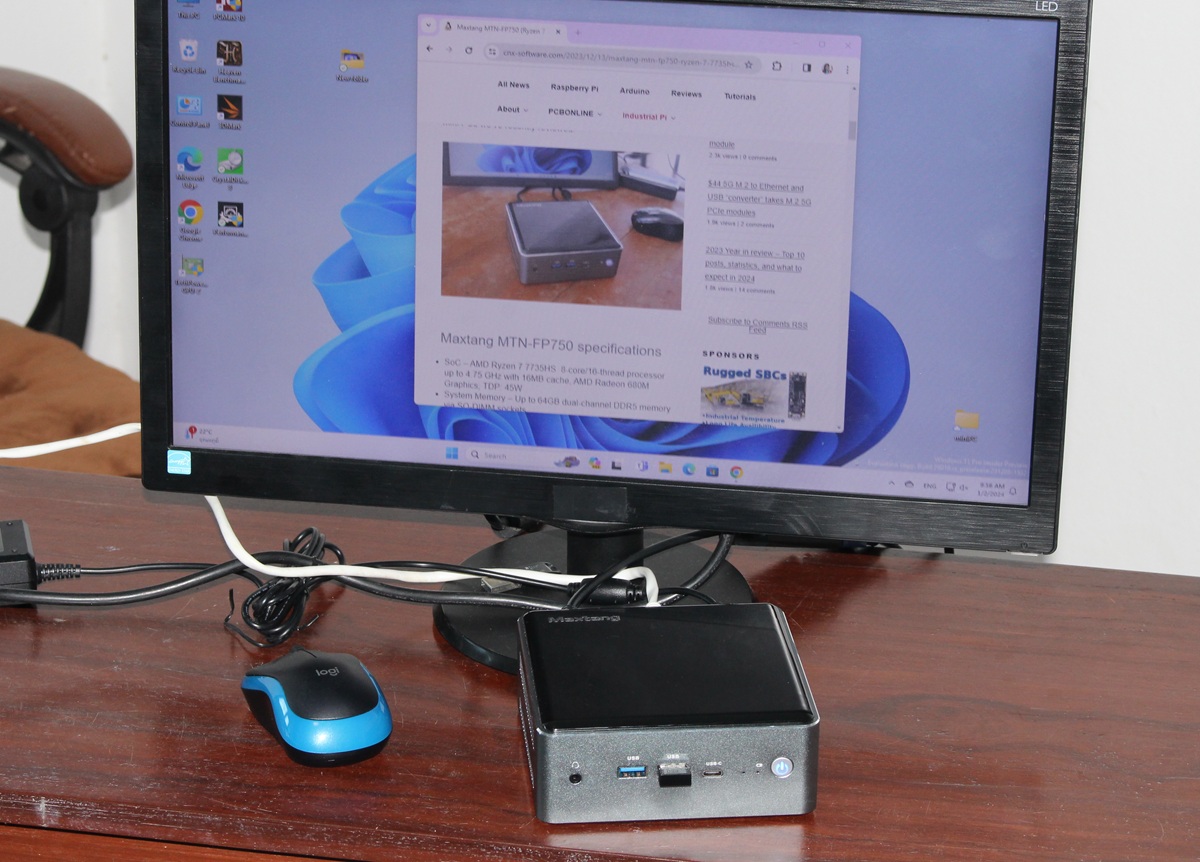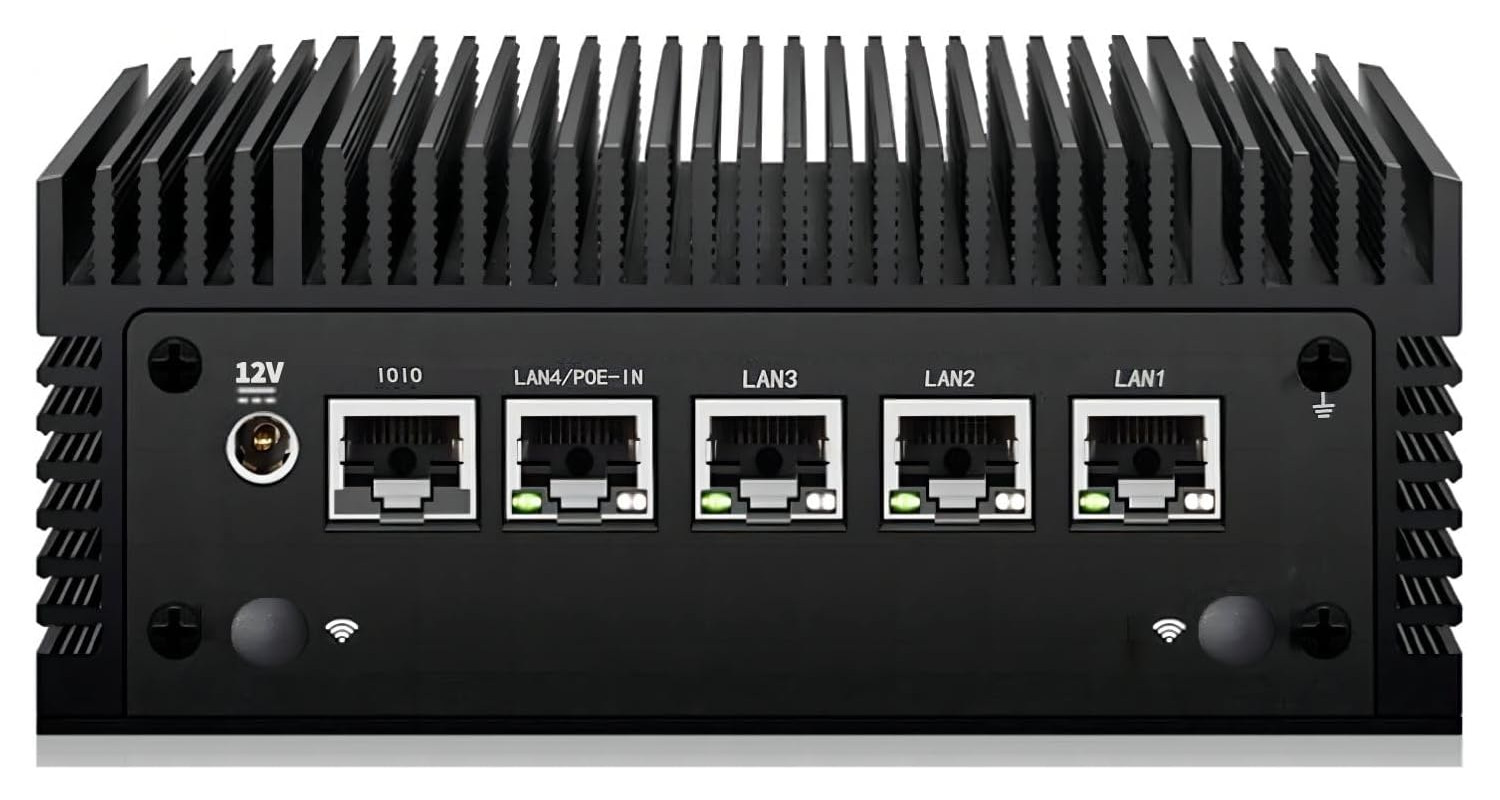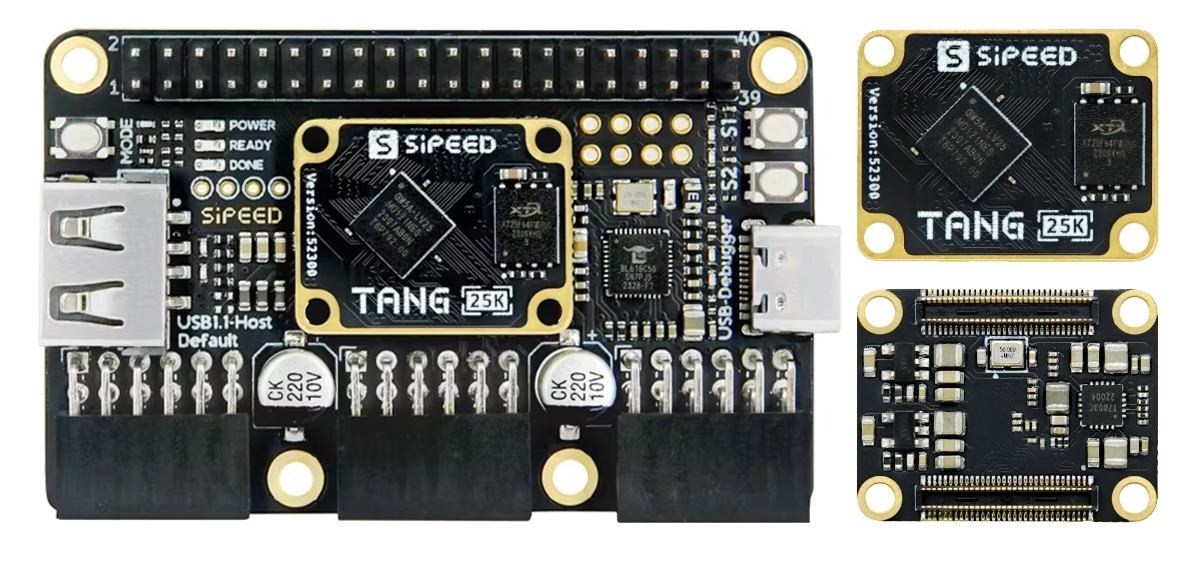Beelink SEi12 i7-12650H is a Windows 11 Pro mini PC powered by an Intel Core i7-12650H Alder Lake-H processor coupled with up to 64 GB of DDR4 memory, up to 2TB of M.2 2280 PCIe 4.0 SSD storage, and various ports such as HDMI 2.0 video output, USB Type-C and Type-A ports, gigabit Ethernet, as well as a WiFi 6 and Bluetooth 5.2 module. Shenzhen AZW Technology, the company behind the Beelink brand, sent us the Beelink SEi12 i7-12650H mini PC with 32GB DDR4 RAM and a 500GB M.2 SSD 500 GB for review. In the first part of the review, we’ll check out the specifications, before going through an unboxing and a teardown, and checking whether it boots to Windows 11 Pro as expected. We’ll then work on detailed reviews with both Windows 11 Pro and Ubuntu 22.04 in the next few weeks. Beelink SEi12 i7-12650H specifications SoC – […]
Qotom Q20332G9-S10 fanless “mini PC” features four 10 GbE and five 2.5GbE ports
Qotom Q20332G9-S10 is described as a fanless mini PC or somewhat more accurately as a router PC with four 10GbE SFP+ cages and five 2.5GbE RJ45 ports powered by an Intel Atom C3758R Denverton Refresh eight-core processor first introduced in 2020. I would rather call it a network appliance than anything with “PC” in its name since the system only comes with VGA video output (e.g. no HDMI or DisplayPort output), no audio support, and Denverton server processors lack an internal GPU. The Qocom device supports up to 64GB DDR4 memory, up to two 2.5 SATA drives, and two M.2 NVMe SSDs, and comes with one extra M.2 socket for cellular connectivity and a few USB ports. Qotom Q20332G9-S10 specifications: SoC – Intel Atom C3758R Denverton Refresh 8-core processor @ 2.4 GHz with 16M cache; TDP: 26W System Memory – Up to 64GB dual-channel DDR4 @ 2400MHz Storage 2x M.2 […]
The PCOM-B65A COM Express module is powered by Intel Core Ultra Processors
Taiwan-based embedded systems manufacturer, Portwell, has announced a new COM Express Type 6 Basic module based on the Intel Core Ultra processor platform. The Portwell PCOM-B65A module is a minimal COM Express module that comes with either one of the H-series or U-series processors in the Core Ultra series. The Intel Core Ultra series (formerly known as Meteor Lake) uses Intel’s 3D performance hybrid architecture (two core microarchitectures on a chip) to optimize performance and distribute workloads efficiently. It also features an integrated neural processing unit that offers low-power AI acceleration and hardware offloading.The I/O and artificial intelligence feature set on the PCOM-B65A COM Express module suits several embedded applications such as medical devices, automation, IoT, and industrial control. We have already covered other products based on the newly released 14th Gen Intel Core Ultra (Meteor Lake) series with the ADLINK’s cExpress-MTL Type 6 Compact module and the ASRock Industrial’s […]
WCH RISC-V microcontrollers can now be programmed with the Arduino IDE
WCH has launched some interesting RISC-V microcontrollers in the last year or so, including the “10 cents” CH32V003 RISC-V microcontroller with 2KB SRAM and 16KB flash or the CH32V307with more resources (up to 64KB SRAM and 256KB flash) and additional peripherals. So far they were programmable in C language using MounRiver IDE or an open-source toolchain, but WCH has now announced Arduino support for many of those RISC-V microcontrollers which should enable more people to get involved. The core library for CH32duino works with OpenOCD through WCH-LINKE hardware to download the firmware and debug WCH chips and a riscv-none-embed-gcc toolchain that supports custom RISC-V instructions (half-word and byte compression instruction extensions and hardware stack push/pop functions) found in WCH RISC-V microcontroller. The following evaluation kits are currently supported with ADC, DAC, USART, GPIO, EXTI, SysTick, I2C, and SPI peripherals: CH32V003F4P EVT board CH32V203G8U EVT board CH32X035G8U EVT board CH32V103R8T6_BLACK EVT […]
Radxa X2L Intel Celeron J4125 SBC goes for as low as $39
Radxa X2L is an inexpensive Intel Celeron J4125 Gemini Lake Refresh single board computer (SBC) that ships with 2GB to 8GB RAM, an M.2 socket for SSD storage, another M.2 socket for a wireless module, and offers a range of ports such as dual HDMI, gigabit Ethernet, four USB port, and a 40-pin GPIO header. The price starts at $39, a price point that reminds me of the Atomic Pi SBC introduced a few years ago with an Atom X5 Cherry Trail processor, but the Radxa X2L is easier to use, offers better performance and modern features, as well as a low-profile form factor that’s about the size of a smartphone, just a bit thicker. Radxa X2L specifications: SoC – Intel Celeron J4125 quad-core Gemini Lake Refresh processor @ 2.0 / 2.7 GHz (Turbo) with Intel UHD Graphics 600 @ 250/750 MHz; 10W TDP MCU – Raspberry Pi RP2040 microcontroller […]
Maxtang MTN-FP750 review – Part 2: Windows 11 Pro on an AMD Ryzen 7 7735HS mini PC
In the first part of the Maxtang MTN-FP750 mini PC review, we looked at the hardware with an unboxing, a teardown, and a first boot to the pre-installed Windows 11 Pro. We’ve now spent more time testing the Maxtang MTN-FP750, also called NUC-7735HS-A16, and we will report our experience with the AMD Ryzen 7 7735H mini PC in Windows 11 Pro with a software overview, features testing, benchmarks, storage and network performance testing, cooling performance, fan noise, power consumption, and more. Software overview and feature testing The Maxtang MTN-FP750 shipped with Windows 11 Pro 22H2, but we updated it to 23H2 (and somehow entered the Windows Insider program) before starting our test. The System->About window confirms the update and that we have an FP750 PC powered by a 3.2 GHz AMD Ryzen 7 7735HS SoC with 32GB of RAM. HWiNFO64 provides some details about the AMD Ryzen 7 7735HS 8-core/16-thread […]
Fanless Intel N100 mini PC supports PoE power input, provides four 2.5GbE ports
NEOSMAY is selling a fanless Intel Processor N100 mini PC with support for PoE power input, four 2.5GbE ports, HDMI and DisplayPort video outputs, and a choice of USB ports for $249 (after ticking the $150 coupon code) on Amazon with 8GB RAM and a 128GB SATA SSD. The mini PC also supports 12V DC power input if you don’t use PoE power input, and comes with an additional RJ45 port acting as an RS232 console. There’s no built-in wireless, but the mini PC can take a WiFi and Bluetooth module, as well as a 4G LTE or 5G module, and features a SIM card slot for the latter. Specifications: SoC – Intel Processor N100 quad-core Alder Lake-N processor @ up to 3.4 GHz (Turbo) with 6MB cache, 24EU Intel HD graphics @ 750 MHz; TDP: 6W System Memory – 8GB DDDR4-3200, upgradable to 32GB Storage 128GB M.2 SATA SSD, […]
Sipeed Tang Primer 25K board features 23,040 Logic Cells for FPGA prototyping and development
Sipeed has recently introduced the Tang Primer 25K, an FPGA board powered by Gowin Semi GW5A-LV25MG121 chip. This board features 23,040 LUTs, USB Host capability, and an optional SDRAM module that unlocks vintage gaming. We have previously covered many FPGA boards like Sipeed Tang Mega 138K Pro, Fudan Micro JFM7K325T, ILYGO T-FPGA, and many other development boards by Sipeed including the Sipeed Tang Nano 20K with a Gowin GW2A FPGA. You can check those out if interested. The Tang Primer 25K development board is divided into the 25K SoM Board and the 25K Dock Board together they offer a comprehensive set of features: GW5A-LV25MG121 specifications: 23040 LUT4 23040 Registers (FF) 28x 18×18 Multipliers 6x PLLs Memory/Storage: 64Mbit NOR Flash 180K Distributed S-SRAM 1008K B-SRAM (bits) 56 Number of B-SRAM I/O Interfaces: 3x PMOD 40-pin header 2x buttons 8x I/O banks 75x General IO MIPI IO – 4lane Data USB Ports: […]


